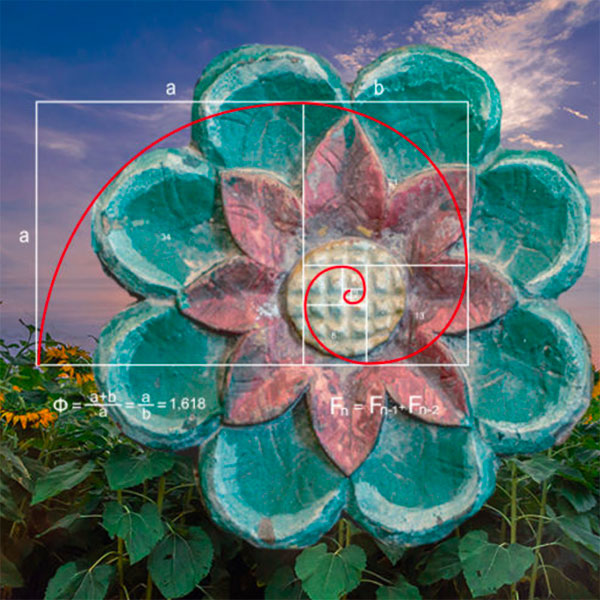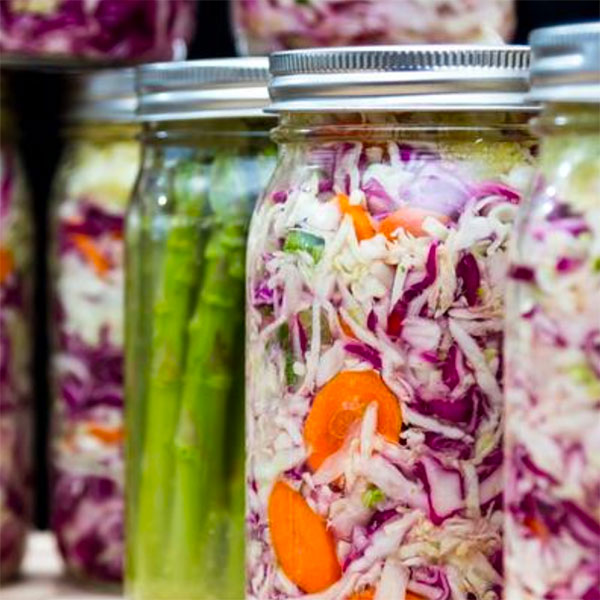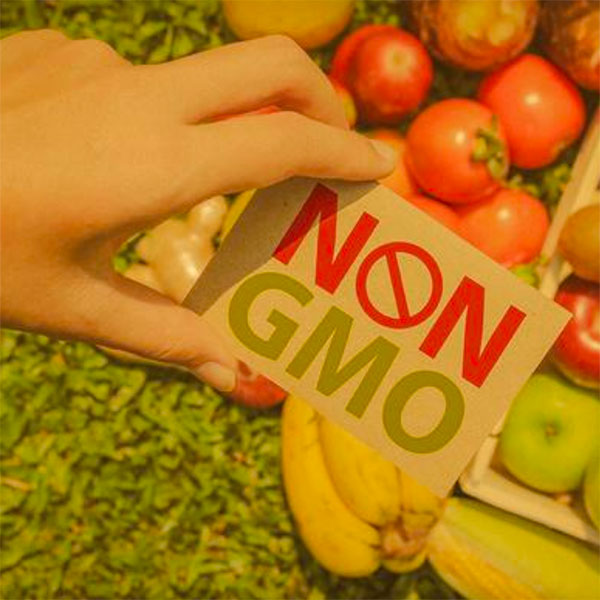Video, Website & Blogs
Marie concepted and wrote a video script for this start-up vitamin company. Targeting Millennials, the imagery reflects rebirth and new life—which is ultimately what “vita nova” means. Marie also blogs for Vitanova on topics of health, supplements, vitamins and nutrition, creating rich and engaging content for health-conscious consumers.

Blog Post: Do Flowers Hold the Secret to Universal Intelligence?
 Since modern man and woman walked the earth with the capability to question and comprehend the world and its universal laws, flowers have been the topic of much philosophizing. They are the epitome of beauty, the most celebrated of gifts, the subject of great poems and works of art, and metaphors for revealing our natural inner essence.
Since modern man and woman walked the earth with the capability to question and comprehend the world and its universal laws, flowers have been the topic of much philosophizing. They are the epitome of beauty, the most celebrated of gifts, the subject of great poems and works of art, and metaphors for revealing our natural inner essence.
Consider this: Have you ever seen an ugly flower? Even a simple daisy is beautiful, and somehow perfect, in its design.
So, what is it that makes flowers universally pleasing to the human eye? Mathematicians, botanists, artists, astronomers, architects and even our own intuition may hold the answers.
In 1202, Italian mathematician Leonardo Pisano, better known by the name Fibonacci, wrote about a sequence of numbers that occurs when a number is equal to the addition of the two numbers prior—for instance, 0, 1, 1, 2, 3, 5, 8, 13, 21, 34, 55, and so on.
The Fibonacci sequence correlates to the discovery of this pattern and similar patterns throughout history, dating back to about 300 B.C. It has been called by many names: The Golden Mean, The Golden Ratio, The Divine Proportion and, in more recent centuries, by the mathematically divided ratios of these sequential numbers that equals 1.618, named phi, after the 21 letter of the Greek alphabet.
This sequence and this number are said to have the proportions that human beings consider to be aesthetically pleasing. Science has found phi more than anywhere in nature—in pinecones and pineapples, in cacti and conifers, in hurricanes and galaxies, in the branching of trees, in the spiral of nautilus seashells and, yes, in many flowers.
Botanists determine that a flower opens its petals to absorb the greatest amount of sunlight—and quite often the number of petals follows the Fibonacci sequence, having 3, 5 or 8 petals, for instance. Oftentimes, the head of a sunflower has this divine pattern in its number of seeds and the proportional formation in which the seeds spiral. The Golden Ratio can be found throughout nature, including in many of our fruits and vegetables—in the spiraling head of a cauliflower, in the pattern of an apple cut in half.
This mathematical equation can also be found in much of art and architecture, as it creates a sense of beautiful proportion and balance in the design. Another Leonardo—namely, da Vinci—is the artist most known for using this proportional ratio in his works and may have even intentionally incorporated it when creating “The Last Supper” and the famous “Mona Lisa.” Whether he intended it or intuited it, the Divine Proportion is there.
But its appearance throughout nature is what has scientists pondering its universal intelligence, its cosmic wisdom. You can even see the patterns in the human body. We have five fingers on each hand, three sections to our arms, and if you divide the length of the forearm by the length of a hand, it equals—you guessed it—about 1.618. Recent discoveries have gynecologists amazed that the most fertile uterus is one that has proportions correlating to 1.618.
Clearly, this mathematical intelligence is a part of our natural world. Though not all things in nature follow this pattern, there are enough examples of it that mankind has taken notice and has been contemplating it for millennia.
A fascinating question: Is there something within us as human beings that resonates with nature, in that we recognize its beauty, balance and cosmic intelligence? Those in the fields of science, math and art will continue to ponder this naturally occurring mystery.
And we will, too.
When we at Vitanova were deciding on the symbol that would best represent our company, we unanimously selected an eight-petaled flower, one that just happened to follow the Fibonacci sequence. We did not choose to incorporate the Golden Ratio into our logo, but that particular flower resonated with us because of its beauty and harmony. We also recognized that a flower is a metaphor for the blossoming of the human essence, a symbol of awakening and rebirth.
It wasn’t until later that we discovered its multi-faceted perfection: the balance, the beauty, the science, the botanical wisdom, and the power of those elements combined. Behold, the flower—that speaks to us of its
universal secrets.
Blog Post: How fermentation can enhance nutrition. Hint: think sauerkraut and vitamins.
 Sauerkraut has made a comeback with a new generation of foodies—healthy foodies. That’s because fermentation makes this centuries-old European cabbage dish a good-for-you choice, and Millennials have re-discovered its benefits. According to Chelsea Krost, Millennial lifestyle expert, younger generations are “obsessed” with fermented foods because the active cultures make them “good for intestinal health and digestion.” Essentially, they’re a delicious way to get your probiotics.
Sauerkraut has made a comeback with a new generation of foodies—healthy foodies. That’s because fermentation makes this centuries-old European cabbage dish a good-for-you choice, and Millennials have re-discovered its benefits. According to Chelsea Krost, Millennial lifestyle expert, younger generations are “obsessed” with fermented foods because the active cultures make them “good for intestinal health and digestion.” Essentially, they’re a delicious way to get your probiotics.
Fermented foods may be one of the latest culinary trends, but many of these recipes have been around for thousands of years since fermentation is one of the oldest-known ways to preserve foods. Fermented foods have played a role in cultures across the globe throughout history, including: Latin America, India, Russia, Europe, China, Japan and Korea. Other well-known, fermented foods include kimchi, yogurt, kefir, kombucha, miso, and tempeh.
So, how does fermentation occur? Yeasts and lactic acid bacteria are two types of microorganisms that foster fermentation—and in the process, common foods such as milk, cabbage and soy are transformed into substances with far more nutritional value. And, not only do they become more vitamin-rich, but the nutrients are also more bioavailable, meaning your body can absorb the nutrients better.
Science-Based Medicine, an organization that explores the scientific perspective of alternative medicine and treatments, did their own research and drew the same conclusions: “The fermentation process enhances the nutritional quality of food by contributing beneficial compounds such as vitamins and by increasing the bioavailability of minerals,” writes Lucy Shewell, author of the Science-Based Medicine article. She goes on to say, “Probiotics, including those found in kimchi, have a range of positive effects on health.” These include supporting a healthy inflammation response, positively impacting the immune system, managing weight, and altering the composition of the gut microbiome.*
Here’s a fascinating fact: Did you know that your vitamins can be produced with fermentation, benefiting your intestinal flora and making the nutrients more bioavailable? It’s an important development in nutrition.
Vitanova™ is one of the only multivitamin brands in the world to use a fermentation process to enhance the nutrition of their supplements. They start with the organic yeast Saccharomyces cerevisiae, and then add in their wide array of nutrients, including vitamins, minerals, herbs, omega fatty acids, organic superfoods and enzymes from tropical fruits. Vitanova then adds three strains of beneficial probiotics: L. acidophilus, B. bifidum, and L. rhamnosus. Under low heat, the fermentation process continues and the cell walls of the substances break down, thereby increasing the bioavailability of the nutrients. In the end, the process creates a living, whole-food complex from which the supplements are made.
So, go ahead, eat your sauerkraut, yogurt and kimchi—and take your vitamins. Who knows? Maybe you just discovered the secret to staying younger, longer.
Blog Post: GMOs: What’s the debate about?
 Genetically modified organisms, or GMOs, are living organisms in which the DNA has been altered with the genetic material of another species. Most GMOs are plants that have been modified to withstand the application of herbicides; the weeds die and the farmers’ crops survive. In one odd instance, to study human-genetic disorders, Chinese geneticists took the bioluminescence DNA from jellyfish and inserted it into the genes of pig embryos, creating piglets that glow in the dark when put under a black light.
Genetically modified organisms, or GMOs, are living organisms in which the DNA has been altered with the genetic material of another species. Most GMOs are plants that have been modified to withstand the application of herbicides; the weeds die and the farmers’ crops survive. In one odd instance, to study human-genetic disorders, Chinese geneticists took the bioluminescence DNA from jellyfish and inserted it into the genes of pig embryos, creating piglets that glow in the dark when put under a black light.
So, why, if GMOs offer benefits to farmers and medical studies, are more and more consumers becoming alarmed? Because today, more than 90% of all soy and corn sold in the United States has been genetically modified, along with sugar beets and canola oil. Not only are these commodity crops our staples, but they’re also common ingredients in many processed foods. In fact, 80% of the food in the U.S. contains some GMOs, and while Big Food, chemical companies, many biotech scientists and world organizations insist GMOs are safe, critics claim genetically modified foods raise serious health concerns.
According to the American Academy of Environmental Medicine, “several animal studies indicate serious health risks associated with GM food consumption including infertility, immune dysregulation, accelerated aging, dysregulation of genes associated with cholesterol synthesis, insulin regulation, cell signaling, and protein formation, and changes in the liver, kidney, spleen and gastrointestinal system.” And, although some attempts at genetic engineering have been done to increase nutritional value, The Institute for Responsible Technology states that the two most engineered traits are “herbicide tolerance and the ability of the plant to produce its own pesticide. These results have no health benefit, only economic benefit.”
Even worse, not only have GMO crops become tolerant to herbicides, so have weeds, creating “super-weeds” which require even heavier applications of most toxic chemicals such as glyphosate, commonly known as Roundup. Scientific American recently reported that the World Health Organization declared “glyphosate a probable carcinogen.”
Unfortunately for Americans, the United States has the loosest restrictions worldwide. According to the United States Library of Congress, “Compared to other countries, regulation of GMOs in the U.S. is relatively favorable to their development…the U.S. is the world’s leading producer of genetically modified (GM) crops.”
Currently the debate has moved into the spotlight on the political stage. Since the federal government won’t pass more stringent laws regarding GMO use, states have taken matters into their own hands. In 2014, Governor Pete Shumlin of Vermont passed one of the nation’s first mandatory labeling laws for GMOs, which requires all foods that are genetically modified or have genetically modified ingredients to be labeled as such. The law goes into effect on July 1, 2016, and legislation currently in Congress and backed by the Big Food lobby is trying to stop the law from taking effect, arguing that state-by-state labeling requirements would make it challenging for the food industry to comply.
Many consumers nowadays want to be informed about the GMOs in their foods. Until laws mandate that the food industry tells us which foods contain GMOs, we can only rely on those responsible companies that can assure us no GMOs have been used. Look for the label “non-GMO” or “no GMOs” to be sure.
